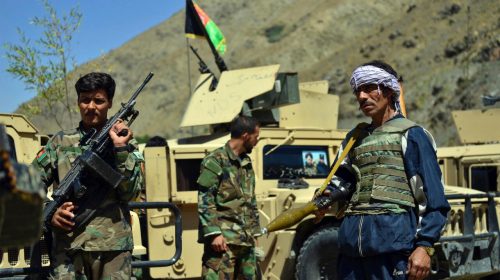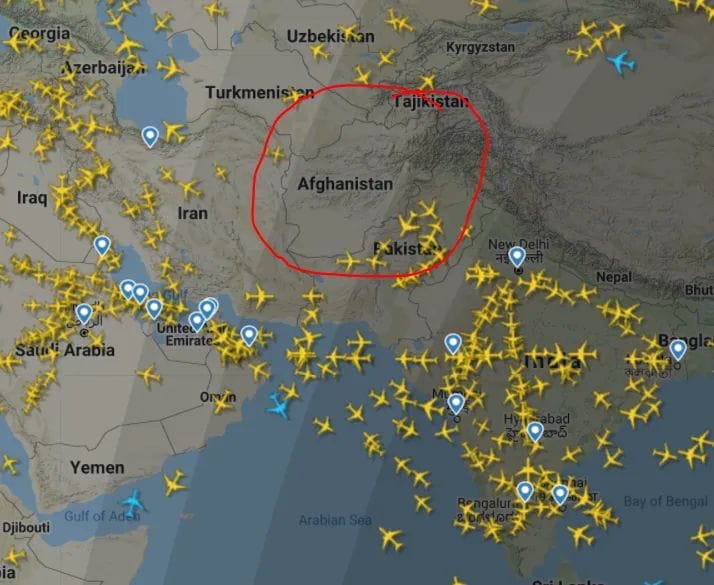Complete analysis of Afghanistan Taliban Takeover

With the precipitous rise of Talibani’s and the downfall of Afghanistan’s government, we have already witnessed the distress situation it is in Afghanistan and seemingly a lot worse to come. The disconcertment of Afghani nationals, an outcry of citizens on their freedom, easy surrender of the region’s powerful military forces at the hands of Talibani’s group, etc. has left the country in turmoil. But what we do not have a clear picture of is the impact it would leave on the world from an economic standpoint. Having said that, it is imperative to understand the repercussion it would lead to if things don’t streamline. Through this article, we would try to delineate the outcome we could expect from this invasion on the economy of Afghanistan (& the world) in the upcoming days.
How it all began?
Ever since Donald Trump (ex-president of the US) authorized to reduce troop levels (from 13k to ~3k), the sentiments of Talibani’s emboldened to regain their control over Afghanistan. With this reduced support of US military, it embarked rise of stronger-than-ever Taliban group and as a result, Afghan security forces started losing territories rapidly. Off two options to choose from either stay/leave or expand/leave, the president opt for the later as the only alternative to withdrawal would have entailed more troops to be aligned and money which apparently had no political buy-in, hence the decision to pull back.
How would this invasion affect relations with India?
Pertaining to a Preferential Trade Agreement (PTA), which both India and Afghanistan ratified in March’2003, India allowed substantial duty concessions (from 50% to 100%) on certain category of comestibles whereas Afghanistan reciprocated concessions to Indian comestibles (including tea, sugar, cement, pharmaceuticals, etc.). In an another event on November’2011, India removed basic custom duties for all SAARC associated countries including Afghanistan at the SAARC Summit, which ultimately benefitted those countries from economic standpoint as majority of the products (except alcohol and tobacco) were free from duties/taxes, resulting in easy access to Indian market. For any country or any business, the thumb rule to incentivize trade is to establish better connectivity between them. To endorse this, a dedicated Air-Freight Corridor between India and Afghanistan commenced dated June’2017 which was flagged off by (now ousted) President Ghani in Kabul and was received by EAM and Civil Minister for Aviation in New Delhi airport. The construction of Chabahar Port in Iran had further strengthened trade relations with Kabul, an another Indian investment in obscurity. This port was linked as India’s gateway to Central Asia (without any reliance on Pakistan). With a future sight for Afghanistan India alliance, India has spent considerably on various projects in Afghanistan. Of $4 billion spent by India on grant-aid projects globally, $3 billion was spent in Afghanistan alone.
However, days after Afghanistan was taken by storm by Talibani’s, tensions intensified between different nations which comprehended trade as one of the factors to be substantially impacted. This has taken a toll in exports/imports, internal trades (local shops per se) with businessmen, traders leaving the country, MNCs limiting/restricting their operations. To understand the impact from economic standpoint, the bilateral trade between India and Afghanistan had crossed $1.5 billion mark in FY’20. India’s exports to Afghanistan almost reached ~$1 billion and India’s import from Afghanistan stretched $530 million. In a nutshell, all of these figures are at risk. If we have to simplify, trade value which had seen a significant improvement over the last five years consistently would now be compromised. Additionally, it is uncertain if the exporters would get their capital ever in return of the traded asset.
What is the major concern from an economic standpoint?
With a lot of people in despair, if they could ever live in peace or do not have to strive for livelihood, the last resort for it to be a reality is only if the Afghanis get any international support to turn the table. However, with the exit of US military forces, the Talibani’s are now in full control of the complete nation and its treasure of resources (majorly minerals) worth ~$2.5 trillion, therefore a worrisome situation as it could lead to a crisis at a certain level (however, we would refrain political agenda here and constrain only to economics for now).
Agriculture and animal husbandry (subsistence farming and pastoral nomadism) are the most important elements of its GDP, accounting for nearly half of its total GDP (~$20 billion per FY2020). The remaining elements comprise of Service and Manufacturing sectors (like airlines, telecom, banking, media, etc.). If we bifurcate Afghanistan’s export partners it follows as Pakistan (48%), India (19%), Russia (9%) as crucial partners and the rest includes Iran, Iraq, and Turkey.
These comestibles include dry fruits (dried raisin, walnut, almond, fig, pine nut, pistachios and dried apricot). But with this unfriendly situation, it had led to a sharp decline in imports of these comestibles leading to limited availability of the stock and hence a contributing factor for surge in prices of these. For instance, steep rise of price of Almonds in Q3 from Rs 600-700 to staggering Rs 900-1500.
These comestibles include fresh fruits such as apricot, cherry, watermelon, medicinal herbs, etc. to Afghanistan. But due to these unfavourable conditions, traders/producers are in standby and hence bearing the loss here in India considering less consumption or low sales.
Excerpts from source (https://eoi.gov.in/kabul/?11360?000)
How would this invasion by Talibani's affect the World directly/indirectly? Let's find out.

1With US leaving behind there $85 billion military weaponry (including choppers, Humvees, aircrafts, etc.), somehow (not to an extent though due to lack of training to operate them) these weaponry could be used against Afghanistan Army/people. However, this confiscation of the complete nation by Talibani’s, has drawn a huge political instability in USA questioning the presidency of current president of the USA, Joe Biden. Apparently, this has taken a toll in some crucial ties between the two country after the downfall of Afghanistan government from power.
Image Source – (www.dailyadvent.com)
2From the visuals of Kabul’s airport that surfaced on Internet, it was evident that hundreds of thousands were left with no choice but to leave their place and flee to the refugee camps or other neighbouring countries for shelter, safety and basic facilities. As leaving there homes, business, jobs etc. has lead to increase in unemployment . Henceforth, the supporting goverments have to do a bit for their better livelihood which in turn would definitely put a burden and eventually would destabilize the economic trend & position for now. Another challenge in front of officials would be to curb spead of COVID-19 with more people settling in respective countries.
Image Source – (www.thenationalnews.com)

3With Taliban superseding Afghanistan ruling government, they have imposed the Sharia Law to be followed stringently by nationals across the provinces under their control. Per Sharia law, there would be no ground for the entertainment industry as well as sport events in the country, which signifies there will be a huge loss to the sports and entertainment industry.
4A disruption in peace propoganda. Even though there has been a denial from Talibani’s on their hostile behavior, it has emerged as an opportunity for neighboring countries and bring in disruption in the Southern region of the globe. While it might not be a major issue for India to tackle these infiltrators, Pakistan would leave no stone unturned to fulfill there own agenda of Kashmir by extending their support to Taliban.

5Hindrance to economic operations. From declaring no flying zone within Afghan territory to re-routing of routes for transportation of essentials, these decisions have significantly added a lot of time in transporation, therefore delay in services and increase in costs to global level.
Image Source – (https://my-mm.facebook.com/myaraofficial)
Conclusion
There will be a backward push to revitalize the economy back to previous state or normal state. Changes in the contracts, delay in services have left the GDP of Afghanistan to mark decline by unmeasurable position. Though few countries have come forward to re-negotiate the new terms of contract with the newly formed governance of Taliban, accepting the current state.
Every country coming to rescue will have long term benefit but will also face difficulties in initial phase. No matter what world leaders bring on the plate with the new peace policies. And interest of all the nations to be addressed. If considering the world economy in itself, Economic operations and the situation needs to be stabilized asap.

5 thoughts on “A Complete analysis of Afghanistan takeover”
Such a wonderful analysis…apt for answer writing 👍
that’s really illuminating
Very nicely presented data and details. A very intriguing read.
This article explains lot of things about how Taliban taking over will affect global economy. All the facts and data analysis is an eye opener. I hope some powerful countries can work together and deal with this situation. Amazing work on writing this article.
Thanks for your blog, nice to read. Do not stop.